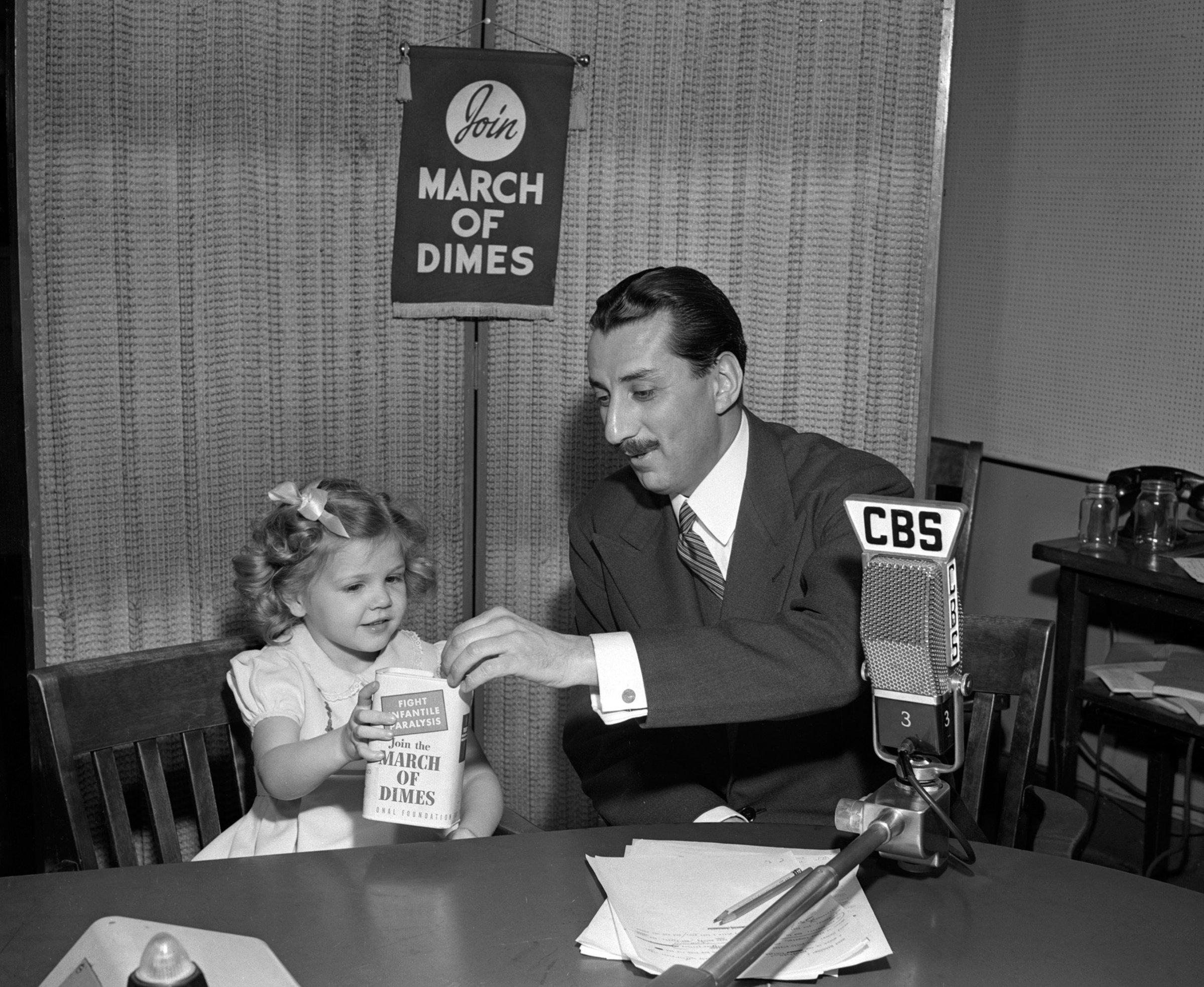
Today, it’s easy for Americans to take for granted being able to dive into a public swimming pool or sit in a crowded movie theater without worrying about contracting polio.
But that’s what life was like 80 years ago, when President Franklin Delano Roosevelt — who had himself contracted polio in 1921 at age 39 — started the National Foundation for Infantile Paralysis. The organization, which officially launched on Jan. 3, 1938, was behind the popular March of Dimes fundraising campaign. The idea grew out of the “Birthday Balls” that FDR had hosted on his birthday for several years running, to raise money to research a cure for polio, as well for as efforts to care for patients and prevent the spread of the disease.
FDR’s backing of the organization helped raise the public profile for research efforts in a critical way. But coming up with the “March of Dimes” name for its primary fundraising campaign was the work of comedian Eddie Cantor.
He “instantly understood [the name’s] appeal, based as it was on a pun on the contemporary newsreel, The March of Time,” according to the organization. First broadcast on radio in the early 1930s, The March of Time, a product of Time Inc., had become even more of a household name when the 20-minute news recaps ran in movie theaters.
As for the “dimes” part of the name, the March of Dimes was designed to solicit a contribution that even people in the Great Depression could make. “Nearly everyone can send in a dime, or several dimes,” Cantor stressed in his Jan. 1938 appeal for donations. “However, it takes only ten dimes to make a dollar and if a million people send only one dime, the total will be $100,000.”
By the end of that month, the White House received a total of 2,680,000 dimes, or $268,000. The money went directly to the research that enabled Jonas Salk and Albert Sabin to develop their polio vaccines in the 1950s.
The campaign came in the nick of time. Polio rates in the U.S. increased from 1.3 per 100,000 in 1938 to 9.3 in 1943, with a total of more than 415,000 reported cases between 1937 and 1955, according to historian Daniel J. Wilson’s 2005 book on the disease, Living with Polio: The Epidemic and Its Survivors. In 1952 alone, the epidemic’s worst year, there were nearly 58,000 cases reported in the U.S. that left 3,000 dead. Between 1943 and 1956, “the polio rate dropped below 10 per 100,000 only once (1947) and saw four years when the rate was in the twenties (1949, 1950, 1953, 1954),” Wilson explains.
After the vaccine’s development, new cases in the U.S. dropped to fewer than 1,000 by 1962, and no new cases have originated in the country since 1979.
While the March of Time movies stopped playing in the ’60s, the March of Dimes campaign marched on, turning its focus to birth defects and infant health issues in general. Other organizations joined the fight against polio globally, such as Rotary International in 1979, which formed the Global Polio Eradication Initiative with UNICEF, the World Health Organization (WHO) and the U.S. Centers for Disease Control and Prevention. Since 2007, the Bill & Melinda Gates Foundation started helping fund the vaccines.
Today, the World Health Organization says polio rates have plummeted 99% since 1988. In 2017, there were only 16 cases, which occurred in Afghanistan and Pakistan — and polio-fighting advocates now hold out hope that 2018 could be the year that polio finally disappears.
More Must-Reads from TIME
- Introducing the 2024 TIME100 Next
- The Reinvention of J.D. Vance
- How to Survive Election Season Without Losing Your Mind
- Welcome to the Golden Age of Scams
- Did the Pandemic Break Our Brains?
- The Many Lives of Jack Antonoff
- 33 True Crime Documentaries That Shaped the Genre
- Why Gut Health Issues Are More Common in Women
Write to Olivia B. Waxman at olivia.waxman@time.com